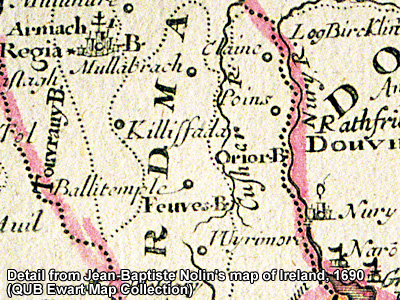
The peace that followed the end to Cromwellian repression was short-lived. The Catholic James II ascended to the throne of England and Protestant settlers felt uneasy. Catholics watched eagerly, as Richard Talbot became Lord Deputy in Ireland. The most powerful Protestant family in the Markethill area, the Achesons, were tolerant of the practice of the Catholic religion and employed many Catholic families on their estate. And it does appear that locally there was no unrest. Poorer Catholics in this area were more concerned with daily living than with political events that changed little in their existence.
Talbot's appointment did less to raise Catholic hopes than it did to arouse Protestant concern. William of Orange landed in Devon in 1688 and Protestant communities formed into associations for the defence of their homes. Sir Nicholas Acheson was involved in the development of these local associations.
Sir Nicholas was not the only local notable to be involved in these events. Reverend Christopher Jenny of Mullabrack Church of Ireland was acting as chaplain to the forces of General Monro at the siege of Londonderry, when thirteen apprentice boys closed the gates of the city in the face of the Catholic Redshanks Regiment. In fact, in 1689 Parliament formally proscribed those accused of treason. Among those so named were Sir Nicholas Acheson, Rev.Christopher Jenny, Robert Fenly of Hamiltonsbawn, Thomas Ball, John Ball and Charles Poyntz of Glassdrummond, Archibald Woods of Markethill and Archibald Johnston of Loughgilly. William's forces landed at Carrickfergus and marched to the banks of the River Boyne where they defeated the army of James. Although this was the decisive victory in the campaign it would take a further five years before the Jacobite forces were finally crushed.
